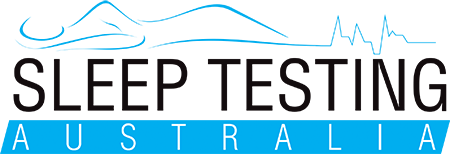Australia’s most prominent sleep health awareness body, the Sleep Health Foundation has estimated that 1 in 12 Australian’s suffer from obstructive sleep apnoea (the most common sleep related breathing disorder).
Current screening methods used in general practice include short questionnaires that assess the likelihood of obstructive breathing events occurring paired with a subjective sleepiness questionnaire (the Epworth Sleepiness Scale).
The Sleep Health Foundation has suggested however that symptoms of obstructive sleep apnoea may vary (particularly between genders) and that screening questionnaires run the risk of missing a sub-group of sleep apnoea sufferers that don’t necessarily demonstrate daytime sleepiness. This was supported by an article published in the Australian Journal of General Practice 2019, that suggested low sensitivity of these questionnaires when used together.
Patients often presenting to general practice with comorbid conditions that suggest the presence of sleep disordered breathing may be overlooked. Below are some tell-tale signs that sleep disordered breathing may exist.
Treatment resistant hypertension1,2 or depression3,4: Hypertension commonly coexists with obstructive sleep apnoea, and OSA is a well established independent risk factor for hypertension. However in patients with treatment resistant hypertension, OSA is seen in up to 85% in this group. Likewise with depression, OSA is seen in a substantially larger portion of these patients compared with a general population (pooled prevalence of 35%). However in treatment resistant depression research suggests up to 64% of this group may have OSA. In another small sample study CPAP therapy led to significant improvement in the Beck Depression Inventory score of treatment-resistant patients.
Metabolic dysfunction / Type II diabetes5: The prevalence of Type II diabetes mellitus has continued to climb in the last 2 decades. Comorbid OSa is seen in as many as 87% of Type II diabetics when paired with obesity, however as many as 1 in 5 non-obese T2DM patients can have OSA. Intermittent hypoxaemia (IH) is a well supported argument for this association. Both glucose and lipid metabolism seem to be effected by intermittent hypoxaemia that is correlated with upregulation of pro-inflammatory markers.
- Demede M, Pandey A. et al. (2011). Resistant Hypertension and Obstructive Sleep Apnea in the Primary-Care Setting. International Journal of Hypertension. Volume 2011.
- Martinez-Garcia MA, Navarro-Soiano C et al. (2018). Beyond Resistant Hypertension. Relationship Between Refractory Hypertension and Obstructive Sleep Apnea. Hypertension. 72(3).
- Garbarino S, Bardwell W et al. (2018). Association of Anxiety and Depression in Obstructive Sleep Apnea Patients: A Systematic Review and Meta-Analysis. Behav Sleep Med. 18(1)
- Khazaie H, Alavi-Mehr H et al. (2017). Higher Risk for Obstructive Sleep Apnea in chronic Treatment-Resistant Depression. Iran J Psychiatry Behav Sci. 12(1)
- Li M, Li X & Lu Y (2018). Obstructive Sleep Apnea syndrome and Metabolic Diseases. Endocrinology. 159(7)

